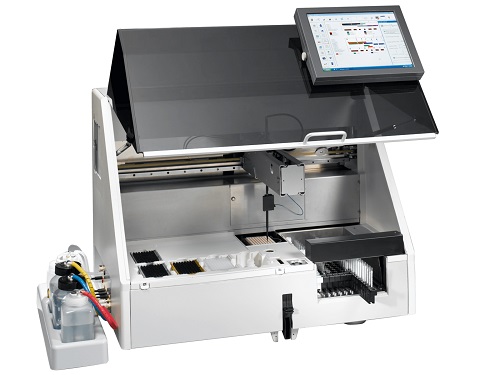ELISA analyzer in medicine, drug discovery, and plant pathology!
The ELISA analyzer is a device that detects and measures the presence of analytes or compounds in liquid samples. It is used in many scientific fields including drug discovery, medicine, and plant pathology. An analyzer is an important tool in many labs because it allows researchers to quickly and easily test a variety of sample types and determine whether they contain proteins or other substances of interest. An ELISA is an assay that uses antibodies to detect and quantify the presence of a specific substance in a liquid sample. This is a common technique for testing cell lysates, blood samples, and food items to name a few types of liquid samples.
ELISA
Analyzer are one of the most widely used
methods for detecting and quantifying antigens in liquid samples because they
offer fast and easy results. However, ELISAs are not suitable for all samples.
This is because the antibodies can be susceptible to oxidation by acids such as
H2O, which can make the detection less sensitive.
There
are a number of different types of ELISAs, each designed to test for specific
analytes. These include direct, indirect, competitive, and sandwich ELISAs.
In
a direct ELISA, the sample plus capture antibody is added to a well in an ELISA
microplate. The target antigen binds to the capture antibody, and unbound
material is washed away. The amount of the target antigen in the sample
influences how much the antibody binds to it and thus, the signal strength.
A
competitive ELISA works similarly to a direct ELISA, except that a reference
antigen is bound to the bottom of each well, and if the sample has an antigen,
it competes with the reference antigen for binding to the antibody. This
reduces the number of unbound antibodies and lowers the signal intensity.
Another
type of ELISA is the sandwich ELISA, which uses two antibodies to capture and
detect target antigens. The capture and detection antibodies must recognize
different non-overlapping epitopes of the target antigen, and they must not
interfere with each other in their recognition. This is important because
overlapping epitopes can cause a false negative result, as the detection
antibody may recognize an epitope that is not in the sample. The detection step
is the most important factor in determining the sensitivity of an ELISA. It is
also the most challenging. There are many different strategies for both capture
and detection, and the choice of method depends on several factors, such as the
sensitivity of the sample, the instrumentation available for signal detection,
and the cost of the labeling steps.




Comments
Post a Comment